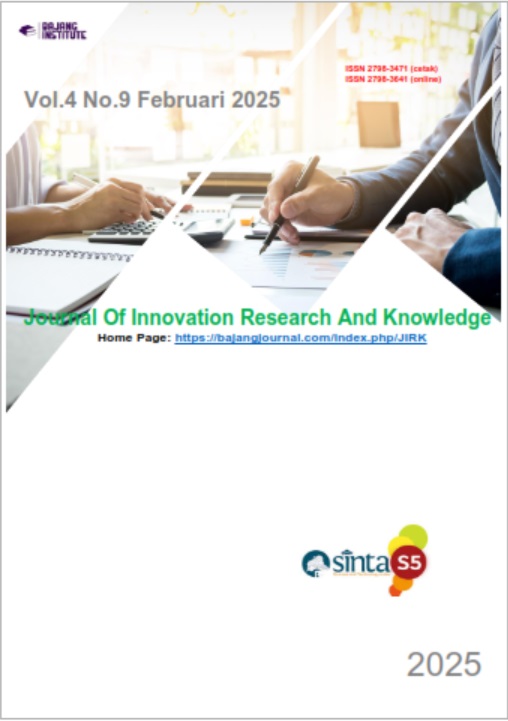DAYA DUKUNG PARIWISATA DI DESA PENYANGGA TAMAN NASIONAL WAY KAMBAS PROVINSI LAMPUNG
DOI:
https://doi.org/10.53625/jirk.v4i9.9687Keywords:
Carrying Capacity, Tourism, National Parks, Way KambasAbstract
Way Kambas National Park (TNWK) in Lampung province is one of dozens of national parks in Indonesia. As the largest elephant conservation center in Indonesia, TNWK is a very unique destination and is in particular demand by Lampung residents. Elephant agility attractions, elephant riding, elephant painting, elephant playing ball are tourist attractions offered by TNWK. However, after conducting a review and evaluation in 2019, the attractions offered by TNWK were considered not to be on the side of conservation principles because behind the cute and adorable elephant attractions there was a very hard training process. Therefore, the TNWK Center plans to change the tourism style in TNWK which was previously massive tourism to an alternative tourism based on education and involving local residents as a driving force for tourism. This change in tourism style of course requires a lot of studies to mitigate the readiness of the TNWK and the residents of the buffer villages who will later become the driving force of tourism in TNWK. One of them is to study the carrying capacity of tourism in 4 buffer villages (Labuhan Ratu 6, 7, 9 and Braja Harjosari Village) which are the gateways of TNWK. This research is a qualitative research that collects data using observation, documentation, interview, and library research methods. This research focuses on 3 aspects of tourism carrying capacity according to the World Tourism Organization (UNWTO), namely physical-ecological aspects; socio-demographic, economic-political. As a result of this study, the current carrying capacity of TNWK and 4 buffer villages is 75.2% physical-ecological aspects, 90.4% socio-demographic aspects, and 95% economic-political aspects. The indicators of the carrying capacity aspect that must receive more attention from TNWK and the 4 buffer villages are waste separation and management management which only meets 33.33%, renewable energy use only meets 25%, and companies with low energy consumption systems only meet 25%.
References
Marcelina, S. D., Febryano, I.G., Setiawan, A., dan Yuwono, S.B. (2018). Studi Daya Dukung Fisik Kawasan Wisata dan Persepsi Wisatawan di Pusat Latihan Gajah Taman Nasional Way Kambas. Jurnal Belantara [JBL] Vol. 1, No. 2, Agustus 2018 (45-53) E-ISSN 2614-3453 DOI: https://doi.org/10.29303/jbl.v1i2.60 P-ISSN 2614-7238
Mariati, S. (2013). Harmonisasi Ruang antara Produksi dan Konservasi di Suatu Kawasan Hutan (Studi Kasus di Kawasan Hutan Tesso Nilo, Riau, Sumatera). Disertasi: Universitas Indonesia.
Mariati, S., & Prakoso, B. (2021). Analisis daya dukung pariwisata. In J. Supriatna, Metode dan kajian sumber daya hayati & lingkungan (pp. 371-378). Jakarta: Yayasan Obor Indonesia.
Nay, H.E.P.U. (2020). Analisis Daya Dukung Kawasan Wisata Alam Pango-Pango di Kabupaten Tana Toraja. Jurusan Teknik Perencanaan Wilayah dan Kota Fakultas Sains dan Teknologi Universitas Islam Negri Alauddin Makassar. Skripsi.
Putri, M. H. (2019). Implementasi Undang-Undang No 10 Tahun 2009 tentang Pengembangan Kawasan Pariwisata Di Taman Nasional Way Kambas Lampung (Doctoral dissertation, UIN Raden Intan Lampung).
Sinay, K. Y. (2021). Strategi pengelolaan pengunjung untuk menjadikanBuntu Burake di Kabupaten Tana Toraja sebagai destinasi pariwisata berkelanjutan. STP Trisakti: Tesis.













